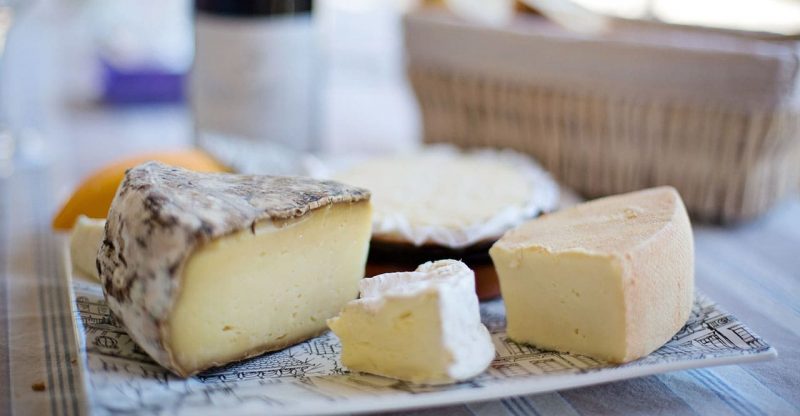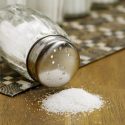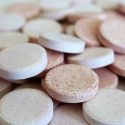What is Powdered Cellulose E460(ii) in Cheeses and Your Dog Food?

Powdered cellulose (cellulose powder), or alpha-cellulose, also known as its abbreviation PC, is commonly used as an anticaking agent, binder and texturizer in cheeses and pet foods. The European food additive number for it is E460(ii).
Maybe you know carboxymethlycellulose (CMC) and microcrystalline cellulose (MCC) well as they both can commonly be found in food products, but the first time heard of powdered cellulose?
Let’s dip into the navigation to know more of this ingredient:
What is Powdered Cellulose?
It is the natural cellulose prior to chemical modification to produce cellulose derivatives, such as carboxymethlycellulose (CMC), methylcellulose (MC), and microcrystalline cellulose (MCC).
Definition
It is purified, mechanically disintegrated cellulose prepared by processing alpha-cellulose obtained as a pulp from strains of fibrous plant materials. (1)
What is Powdered Cellulose Made of?
It is composed of alpha-cellulose.
Structure
Cellulose is a polysaccharide of the monomer (C6H10O5)n with glucose units linked together through beta-1,4 glycosidic bonds.
How is Powdered Cellulose Made?
It is made from natural wood pulp or cotton.
Generally, the manufacturing process has two steps as follows:
- obtaining alpha-cellulose by separating it from hemicellulose and lignins, which is the same with that of producing microcrystalline cellulose.
- alpha-cellulose is washed, milled, sieved and adjusted to a specific particle size distribution.
It is not chemically modified as the amorphous region remains while it is hydrolyzed in the second step of the manufacturing flow of microcrystalline cellulose with a mineral acid.
Specification & Properties
| Appearance | A white, odourless powder |
| Other names |
|
| CAS number | 9004-34-6 |
| Chemical formula | (C6H10O5)n |
| Solubility | Insoluble in water, ethanol, ether and dilute mineral acids. Slightly soluble in sodium hydroxide solution. It is able to swell in water, dilute acid and most solvents. |
| Molecular weight | (162)n (n is predominantly 1,000 and greater) |
| Particle Size | Not less than 5 μm (not more than 10 % of particles of less than 5 μm) |
What are the Uses?
Generally, powdered cellulose is a dietary fiber that primarily used as an anticaking agent in food, feed, cosmetics, and pharmaceuticals.
Food
Commonly its food grade can be used to prevent agglomeration of cheeses by absorbing, binding and retaining moisture.
Let’s see its functions and uses as follows:
- Hamburger patties, dumplings, pizza, steamed fish paste: Moisture holding
- Bread/pastries, ice cream, cake: Provide firmness
- Doughnuts, fried chicken: Anti-oil absorption
- Cereal bar: As a dietary fiber
- Rice-substitute and other low calorie food: Low calorie
- Sausage casing, dumpling skin: Adds firmness to film
- Shredded cheese, seasonings: Anti-binding
- Marinade for ham/sausage: Anti exuding
Feed
It can be used in pet food, such as dog and cat food as a dietary fiber, to control calorie intake and provide firmness.
Also, it can be used in the product like fishing bait.
Cosmetics
Per the “European Commission database for information on cosmetic substances and ingredients”, it functions as an absorbent, anticaking, bulking, opacifying, and viscosity controlling agent in cosmetic and personal care products. (2)
Pharmaceuticals
It can be acted as an excipient (filler) in pharmaceutical formulations with the following functions (3):
- An alternative to lactose
- Stabilize tablets due to its binding properties and natural fiber structure
- High plastic deformation
- High compressibility
- Accelerated disintegration
- Low moisture absorption.
Is Powdered Cellulose Safe to eat?
Yes, its safety when used as a food additive has been approved by the U.S. Food and Drug Administration (FDA), European Food Safety Authority (EFSA), Joint FAO/WHO Expert Committee on Food Additives (JECFA), as well as other authorities.
FDA
Cellulose is approved by the FDA by prior sanction as a food ingredient and additive used before the passage of the 1958 amendments to the Food and Drug Act. It is also mentioned by USDA that powdered cellulose is approved as following function and applications (4):
- Anti-caking agent, used in shredded cheese and spices
- Filtering aid
- Moisture retention
- Non-caloric bulking agent used in reduced calorie products
- Texturizer, dispersing agent
- Emulsifier, used in frozen products to maintain texture through freeze -thaw cycles
However, it is not listed in 21CFR as GRAS (Generally Recognized as Safe). (5)
EFSA
PC (E 460(ii)) is listed in Commission Regulation (EU) No 231/2012 as an authorised food additive in the EU as “Additives other than colours and sweeteners”. (6)
Safety re-evaluation in 2017
After the study on genotoxicity, carcinogenicity, reproductive and developmental toxicity and other researches, EFSA concluded that “there was no need for a numerical ADI and that there would be no safety concern at the reported uses and use levels for E460(ii).” (7)
Authorised Uses and Levels
Its approved application is listed in Group I and separately by E460 and the subclass E 460(ii). The uses in authorised food categories are quantum satis (QS).
The following foods (separated list with E 460(ii)) may contain it (8):
- Cheese products: unripened cheese, whey cheese
- Table-top sweeteners
Food Standards Australia New Zealand
It is an approved ingredient in Australia and New Zealand with the code number 460. (9)
JECFA
Function Class: food additives, anticaking, emulsifier, texturizer, stabilizer. (10)
Acceptable Daily Intake: ADI “not specified” set in 1997. (11)
What are the possible Side Effects?
It is common that sometimes consumers have questions whether powdered cellulose is bad for our health and what are the side effects in the food we eat. However, it does not have reported side effects except large amounts of consumption possibly exerts a laxative effect.
Frequently asked questions
Is it Natural?
Yes, it can be considered non-synthetic (natural) from the manufacturing process mentioned above.
It is not natural if using other methods indicated by EFSA “ the cellulose chains are partially degraded, enzymatically or thermally, or by means of using chemical reagents. The amorphous portions of the cellulose are hydrolyzed with these treatments and removed”
Is it Gluten free?
Yes, it is gluten free according to the FDA’s definition of gluten food as powdered cellulose does not contain wheat, rye, barley, or crossbreeds of these grains.
Is it Vegan?
Generally, it is vegan as it produced from cellulose, the plant-based fiber commonly from the wood and cotton and the manufacturing process without the use of animal matter or products derived from animal origin. So it is considered vegan and vegetarians can eat the food with it.
What’s the Difference between Powdered Cellulose (PC) and Microcrystalline Cellulose (MCC)?
They’re both the derivatives of cellulose and mainly acted as anticaking agent.
The following is some difference:
- Manufacturing Process: PC comes from purifying natural wood pulp to obtain alpha-cellulose and then mechanically disintegrate it. While MCC is produced by hydrolysis alpha-cellulose to improve its crystallinity.
- Molecular weight: the average molecular weight in PC is much greater than that in MCC.
- Compressibility, disintegration and fluidity: MCC has better properties than PC. MCC is a free-flowing while PC has poor fluidity.
- Application: MCC used widely than PC.
5. What is the Fiber Content?
Almost 100% fiber.
6. Is it Dairy Free?
Yes.
Conclusion
Now you may have a knowledge of the anticaking agent – Powdered cellulose (E460ii), from the following aspects:
- Composition and manufacturing processes.
- Uses in food, feed and pharmaceuticals.
- Safety
- Side effects
- FAQs: is it natural, vegan, comparison with microcrystalline cellulose, and etc.
What kinds of food labels have you found this ingredient in? Let me know in the comments.


